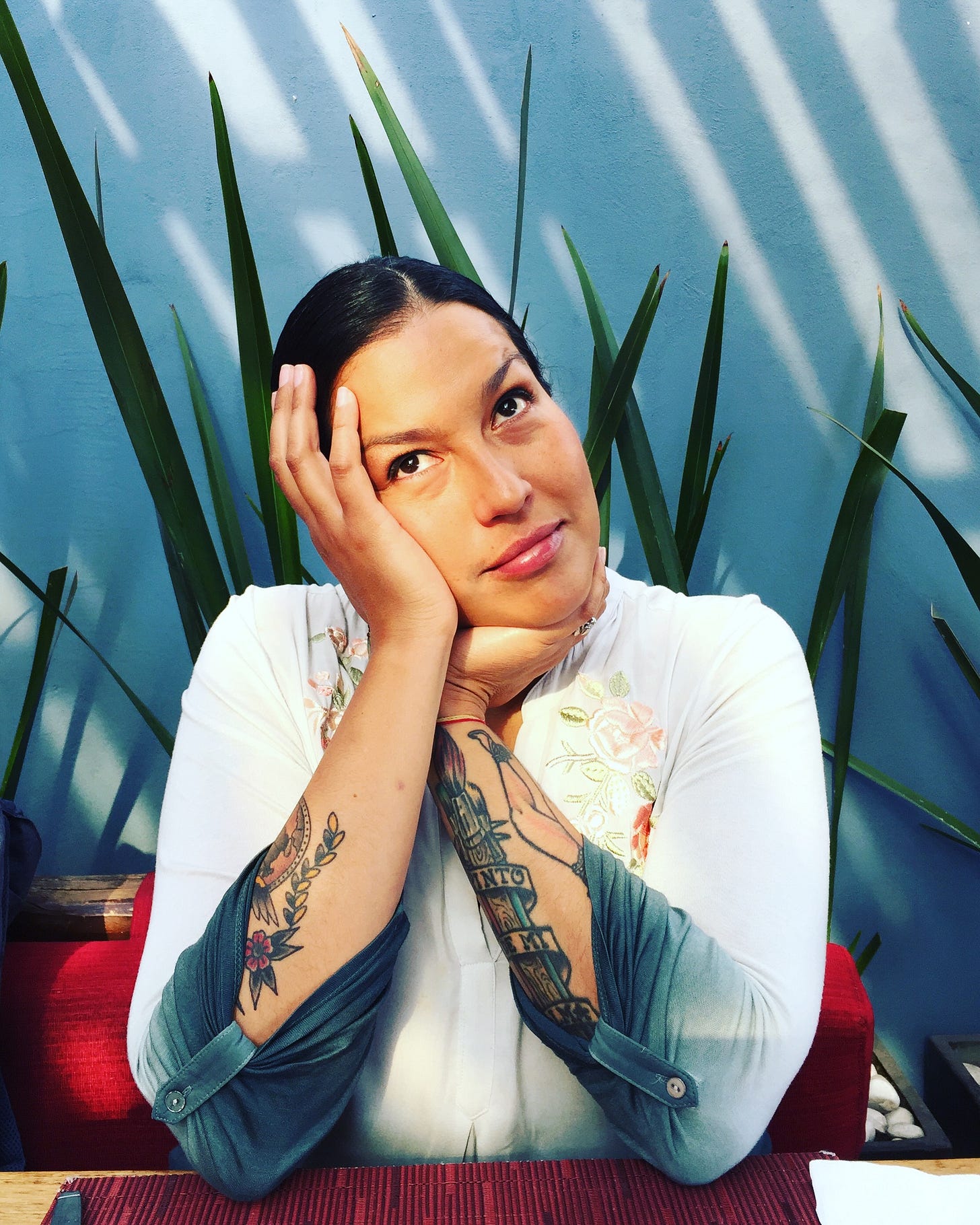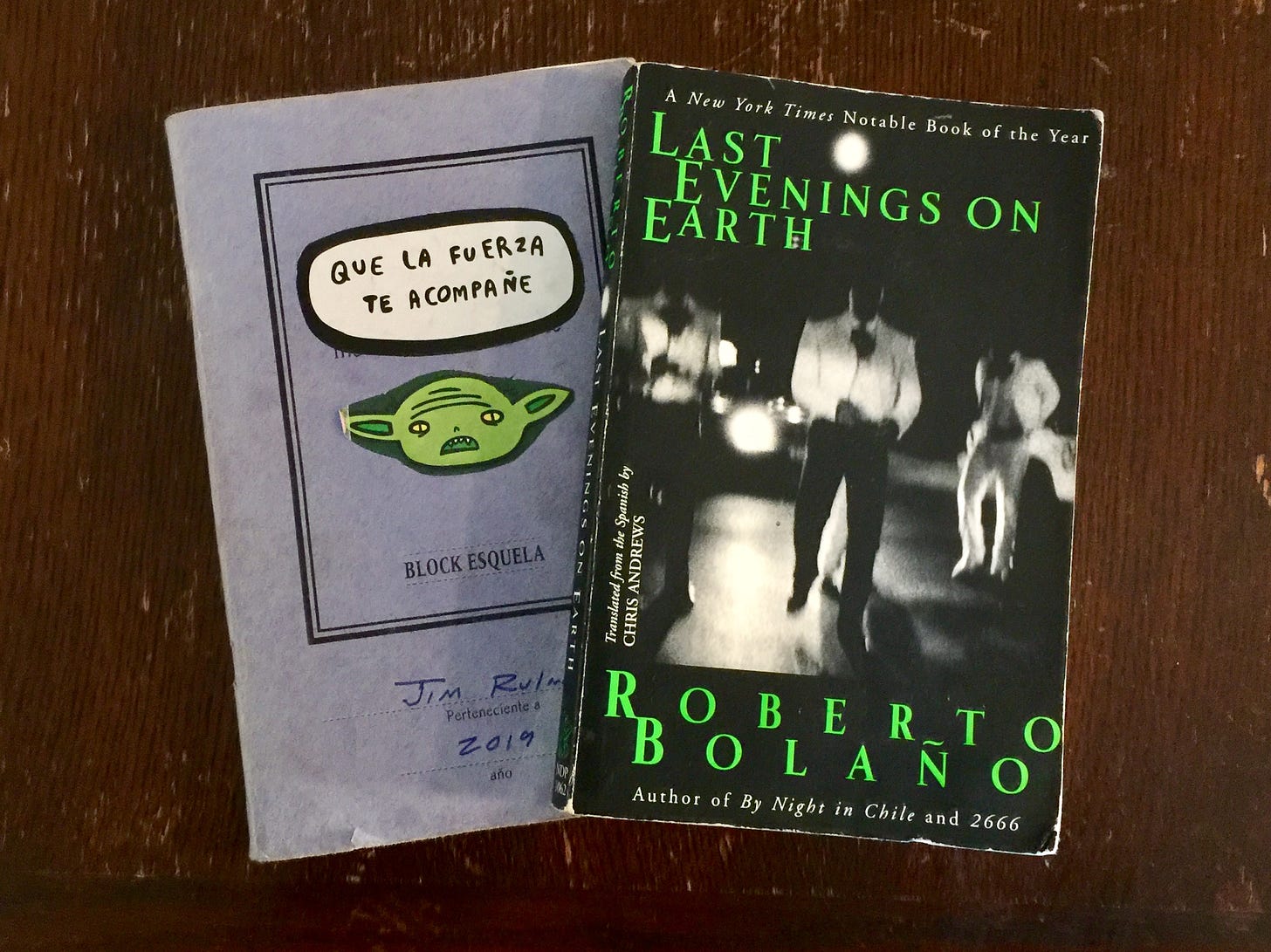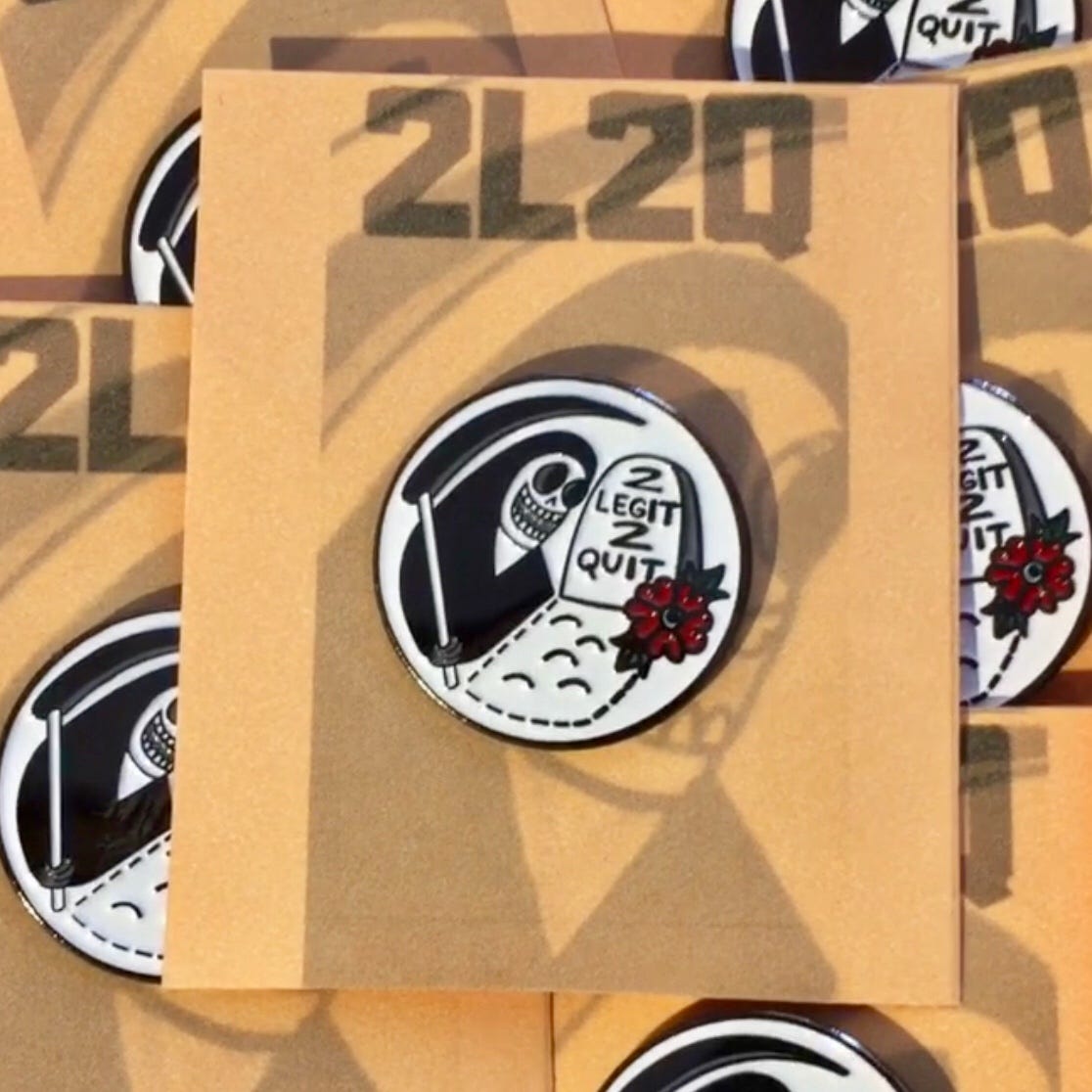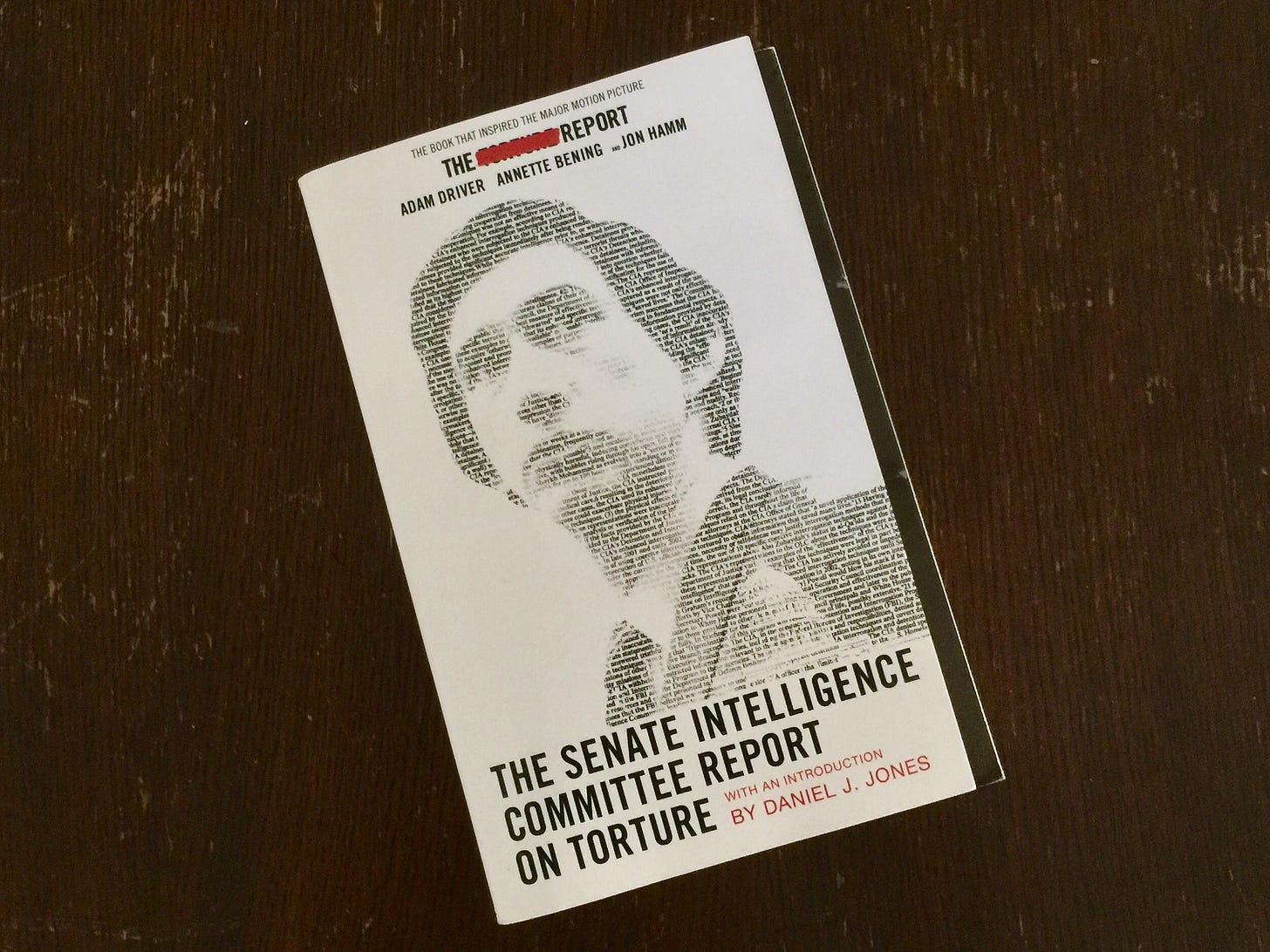I’ve been writing short stories in longhand lately, and for this I blame Roberto Bolaño.
Earlier this year, Nuvia and I planned a short trip to Mexico City in April. I’d been saving Roberto Bolaño’s great novel of Mexico City, The Savage Detectives, and I wanted to read it before we went, but I somehow never got around to it.
So the night before we left, I threw Bolaño’s Last Evenings on Earth, a short story collection, in my bag. In Mexico City I read just one of the stories—the first one—but I read it over and over again.
The story is “Sensini” and it’s about a young writer’s correspondence with an older writer. Not much happens in the story. Both writers are from South America, but different countries. Both writers now live in Spain, bit in different cities. The correspondence fizzles out and the two writers never meet.
There’s a great deal to the story I’ve leaving out, including its main idea about political violence, but I’m summarizing it in a way to make a point: I was struck by Bolaño’s audacity to write a moving story about two men who remain strangers to one another.
I love the way Bolaño makes high art out of low-brow subjects. He’s obsessed with writing about writers, and almost always manages to make it compelling because he’s so scathing in his judgment—even though his own stories are so unconventional. A typical Bolaño move is to dump a bunch of information in the first page—a blatant violation of the show don’t tell edict—and then tell you none of it matters. He’ll capture your attention and frustrate your expectations. He has a poet’s attention to (and disregard of) form.
But a large part of Bolaño’s power for me is that he inspires me to write. I immediately wanted to write a story like “Sensini.”
In Mexico City we stayed at the Four Points Sheraton in Roma, close to Cafebrería El Péndulo Roma, one of the world’s great bookstores and a great place to take photographs in the morning light.

One afternoon Nuvia and I were walking down a street that was mostly in shade. It was a quiet, pleasant street, and the jacaranda trees were in bloom. I saw an old man laid out on a gurney that had been left in the middle of the street, like a scene out a Gabriel Garcia Marquez novel or a 90s alternative rock video. Other details quickly coalesced: a man in a white lab coat, an ambulance backing out of a driveway. We’d come to a clinic, I realized, and this man was being transferred to or from the clinic via ambulance. It just so happened that when we came walking down the street his gurney had been left in a patch of sunlight.
I carried that image with me back to San Diego, and tried to write a story around it. I worked out some scenarios and gave the old man a name—Fermin—but the story bore the burden of Bolaño’s influence and didn’t go anywhere.
The following month, I tagged along with Nuvia to Barcelona for a work trip. Barcelona is also Bolaño territory. He spent the last years of his life in Blanes, a small coastal city to the north, but would come to Barcelona to meet with friends or receive treatment for his declining health. I packed Last Evenings on Earth and a brand new notebook I’d bought in Mexico City—I love buying new notebooks, the cheaper the better—and resolved to work on the story.
And I did. I wrote in cafes. I wrote in bars. I wrote in a warm and stuffy library. My notebook tells me I wrote in a place called Easy Home, though for the life of me I can’t remember what kind of place that might be.
When Nuvia returned to San Diego, I stayed in Barcelona for a few days to meet up with Bad Religion to conduct a few additional interviews with the band for the book that comes out next August, and on the night before they arrived I finished “Fermin” in a bar called Resolis while drinking alcohol-free beer and eating fried potatoes.
A happy moment.
When Nuvia and I went to Merida to celebrate my birthday this summer, I brought my notebook and now battered copy of Bolaño’s Last Evenings on Earth. I don’t know what story in the collection inspired me this time, but I wrote another story. This one was about a writer I used to know, which also serves as a description of much of Bolaño’s work.
Last month, when Nuvia and I went to Guadalajara for the weekend (the airline messed up our luggage during our Merida trip and issued us vouchers, which expired in 90 days, but we were determined not to let them go to waste), I started a new story in a new notebook. It’s about a writer who interviews another writer, both of them trying to reclaim something they’ve lost, but they have to destroy one another to get it. I haven’t finished it yet, but I like where it’s going.

I’ve never been much of a longhand writer—with one exception. In July of 2013 I took a trip to Merida with Nuvia and several of her colleagues. They went to attend a conference, but I was free to spend my days as I pleased and was looking forward to working on a novel project.
But when I unpacked my bags I realized I’d forgotten my laptop charger, and what little juice I had left I needed to save so I could receive and review proofs for Giving the Finger.
Distraught at the thought of losing all that time, I decided I’d try to write some shorter pieces in my notebook. That worked out very well and I wrote two long short stories: “The Gourd,” which was published by Black Candies, and “The Canyon,” which just came out in Zyzzyva last winter. (That’s five years after it was written if you’re keeping score).
I’m happy to report that I won’t have to wait that long to see “Fermin” in print. The story was named a finalist in The New Guard Volume IX Machigonne Fiction Contest, and will be published next year. I entered the contest because the judge was Elizabeth Hand, whose work I adore, especially the Cass Neary novels. (Seriously, read Generation Loss.) Although I didn’t win, I’m thrilled she read my work.
When the story was selected for publication, it was so new that it had not been rejected by any of the other places I’d sent it, which is a first for me.
I don’t know how long I’ll keep writing stories this way. I don’t want to make a fetish out of it. Writing rituals are like drug habits: eventually they stop working.
But this method favors forward momentum and discourages revision, which suits the stories I want to write at the moment. I think I worry less about language when I’m writing in longhand.
I spend so much of my life looking at screens—too much really—that it’s really nice to sit down with pen and paper, especially when I’m in a new place and there’s so much information to process.
Best of all, it gives me an excuse to keep buying notebooks.
Miscellany
· Look for my profile of Tommy Orange in the Los Angeles Times this week. That means in next week’s newsletter I can finally dish about the poor behavior of some of the attendees at Orange’s reading at the San Francisco Main Library last month.
· I made an enamel pin with a cute little grim reaper laughing at a headstone that reads: 2 LEGIT 2 QUIT. I don’t know why I felt like this needed to be brought into the world, but I did and now it does. It’s available for purchase at my online store for $10 (plus $1 shipping and handling) but for you my lovely subscribers I’m going to cut the cost in half for a limited time. That’s $5. I use the free version of bigcartel, which doesn’t allow me to offer a discount code, so I’m just going to lower the price until Sunday. Buy as many as you like. Buy more than one and the shipping is free.

Lit Pics for November 21-27
Literary recommendations for Southern California and beyond.
Thursday November 21 at 8:30pm (SD)
VAMP is running a week early due to Thanksgiving. This month’s theme is Safe Harbor. Go to the Whistle Stop early to ensure you get a seat because this event is always standing room only.
PLAN B (LA)
PEN America and Skylight Books presents Carmen Maria Machado in conversation with Kima Jones at Dynasty Typewriter. I saw Machado read from her new memoir, In the Dream House, earlier this year, and really enjoyed it. This is a ticketed event so plan accordingly.
Friday November 22 at 7pm (SD)
Non Standard Lit presents poet Kazim Ali and essayist / poet Marco Wilkinson at Verbatim Books.
Saturday November 23 at 2pm (SD)
Matt Coyle signs Lost Tomorrows at Mysterious Galaxy. This is the sixth book in the Rick Cahill series, which is set in San Diego. (It seems like yesterday when the first one, Yesterday’s Echo, came out.) This is a bittersweet event because Mysterious Galaxy has lost its lease and is looking for a new owner. If they don’t find one soon, they will have to close. I’ll be attending this event so maybe I’ll see you there.
Sunday November 24 at 11:30am (SD)
Coffee with the Catapult is the kind of event that makes indie bookstores essential to a thriving community of readers. The Book Catapult’s co-owner and book buyer will discuss what’s new in the world of lit. Also, the shop’s art curator will give a brief discussion about the work on the walls. And there will be coffee. I haven’t been to one of these in a while, so I’m going to try and swing by.
Monday November 25 at 7:30pm (LA)
There’s not much going on this week because of the Thanksgiving holiday, but if you’re not stuffing yourself into a Basic Econo Ultra Regular seat on your favorite airline, why not take in a variety show that’s all about taking creative risks and pushing your limits? Nervous is a monthly show hosted by Deenah Vollmer at Stories Books & Café.
Tuesday November 26 at 7pm (LA)
Book Soup and Alta present Poorlier Drawn Lines, the third installment of Reza Farazmand’s Poorly Drawn Lines series of comics. If you know, you know.
Wednesday November 27
It’s the day before Thanksgiving and that means getting ready to spend a long weekend with family. What book will you be reading to help endure this exquisite torture? As for me, I’m going to curl up with The Senate Intelligence Committee Report on Torture, which, incredibly is being made into a movie starring Kilo Ren.
Thank you for reading Message from the Underworld.



